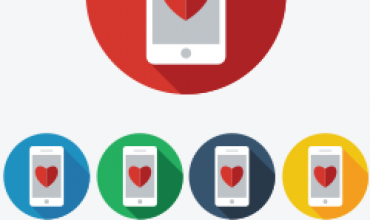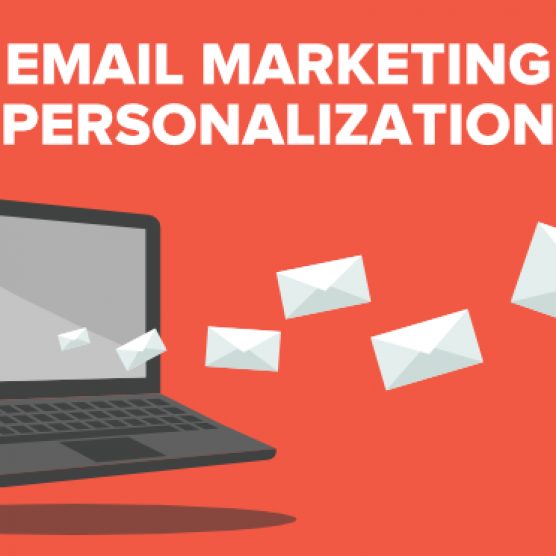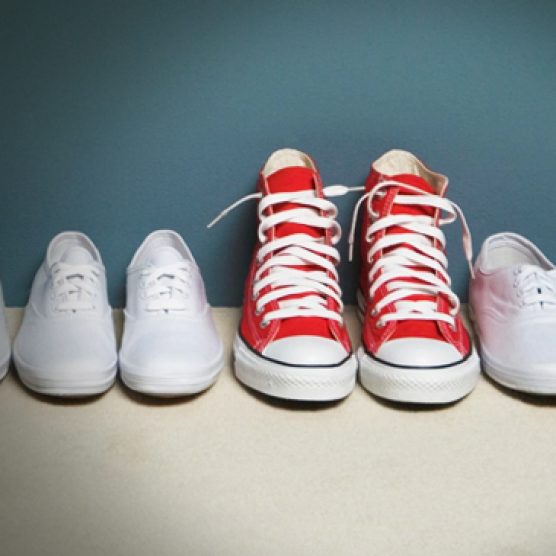Fast Casual Restaurants and the Omni Channel

Discover the Restaurants Serving Up Digital Age Value
Chipotle, Panera Bread, Shake Shack… What do they all have in common?
If the first thought that came to your mind was, “They are so darn delicious!” you would not be wrong. If your second thought was, “The quality of the food!” again, you would not be wrong. Now, if your third and final thought (as I’m only giving you three!) was, “The prices are so affordable!” well, once again, you would be right.
Added together, what do these three attributes of fast casual dining equal?
Value.
According to The Washington Post, citing data from research firm Euromonitor, the market share for fast casual food has grown by 550% since 1999 … that is more than 10 times the growth of the fast food industry over the same period. This number is cited frequently with a certain degree of confusion and perplexity. Marketing traditionalists have trouble wrapping their heads around this type of sustained growth.
Yet, value is the key.
The digital age is all about aligning with consumer values and engaging in mutually beneficial exchanges. From the clothes we wear, to the electronics we purchase, to the friends we keep … we instinctively assign value to all facets of life.
With our dining experiences, it is no different.
Fast casual restaurants recognized the notion of value before most in the restaurant industry, and as early “value adapters” they have made their mark with the irresistible combination of quality food, fast service, and value. As with any mechanism for digital age success, there are multiple moving parts. Two of the most important parts of the fast casual value exchange are innovation and millennials.
Let’s take a look at both.
Fast Casual – millennials and Tech Innovation
Ah yes, millennials…
That group of 12- to 35-year-olds born between 1980 and the mid-2000s that we and every other marketer have written about ad nauseam. They were raised with the internet, they know how to get what they want almost instantaneously, they are the sons and daughters of the digital age.
While we will avoid diving too deep into the characteristics of the millennial generation that we and others have already covered, there are a few important truths about millennials and fast casual dining that we should quickly review. The value relationship between millennials and fast casual dining has been on the rise since the early 2000s and it focuses on a variety of different areas, including: clean locations, fast service, social media networking and social consciousness.
All are well-known and well-marketed aspects of the fast casual experience and each one has contributed to a positive market response. How positive? According to millennial marketer Blue Bear Creative:
- The National Restaurant Association estimated fast casual-dining sales to be at $709 billion for 2015 (an increase of 3.8% from 2014)
- NPD Group reports that fast casual visits have increased by 5 to 9% each year over the past five years
- Restaurant Marketing Labs reports millennials will spend more per capita in restaurants than any other generation
Another well-documented element of the fast casual value exchange is the industry’s pioneering use of personalization and technology innovation. These two elements cannot help but go hand-in-hand in the digital age. The influence of technology runs strong with today’s consumers as evidenced in recent findings reported by the Wand Corp.
The article states that not only do 33% of 25- to 34-year-olds expect to use their smartphones to pay at restaurants, but at least once a month:
- 31% of consumers use mobile devices to view menus
- 27% of consumers order from a restaurant’s website or app
- 23% of consumers read online reviews
Why all the emphasis on mobile?
Because it is how today’s consumers connect!
Understanding this, fast casual restaurants use mobile technology and other connected devices to not only learn about their customers wants and needs, but to leverage this data to create a truly unique personalized experience. Menus and devices can be unique, even social media interactions can be based on device data. Other areas of fast casual omni channel innovation include:
- High Tech Ordering: Table top kiosks are the future of fast casual ordering. No longer will consumers have to adhere to the restrictive nature of order and payment lines. Consumers will be able to browse the menu at their leisure and order when ready. This system allows for the creative and strategic implementation of menus and enhances personalization by giving consumers the ability to customize their orders.
- Online Ordering: Whether purchasing a handbag or burrito, e-commerce is all about convenience. Online ordering platforms have been a staple of fast casual for years, giving customers the ability to order in advance and from the comfort of their homes. From personal ordering, to the professional catering boom, having the option to accommodate a busy digital age schedule is a value transfer that makes digital age consumers more likely to elect fast casual over other similar dining options.
- Loyalty Programs: Digital age loyalty programs are based on the notion of “mobile first.” As mobile applications have granted deep insight into customer behavior, fast casual restaurants have created loyalty programs specific to individual consumers. By reviewing the frequency of visits, specific locations and order preferences, fast casual restaurants can create robust profiles for consumer preferences and habits.
Let’s take a look at several examples of omni channel/fast casual innovation.
Example #1 – Panera Bread
Panera Bread sets the digital age standard for fast casual.
Panera initiated a so-called “Panera 2.0” strategy in 2014 in an attempt to reconnect with today’s consumers. This strategy involved a complete consumer experience makeover and a simplification of the guest experience. The two cornerstones of the makeover are digital ordering and digital payment.
Walk into your local Panera Bread and it is bound to look quite different from the soup, salad and sandwich cafe/bakery you are used to. Remember the long lines around lunch time and the buzzer you were given to call you when your order was ready? Both are gone. Today you will find ordering to-go, ordering from the table, fully customizable ordering, touch screen kiosks, mobile and online payment options and the list goes on.
It was important for Panera Bread to reconnect with millennials, after all, it was only three years ago that their millennial-targeted “EZ Chicken” social media campaign bombed. Panera Bread’s integrated approach of 2016 focuses less on gimmicks and buzz and more on providing a truly enhanced guest experience. This new tech infusion, together with a refined emphasis on healthy ingredients and social justice, has gone a long way in repairing the loyalty damage done from prior marketing mishaps.
In the words of CEO and founder Ron Shaich:
“Panera 2.0 is an investment in the customer enabled by technology and powered by operational excellence. It’s more than a mobile payment system or digital-ordering process. It’s an integrated, comprehensive, end-to-end solution that we believe will reduce friction such as wait times, improve order accuracy and minimize or eliminate crowding — all while creating a platform for an ever more personalized experience.”
It is a solution otherwise known as the omni channel.
Example #2 – Shake Shack
While Panera Bread may be leading the fast casual pack, Shake Shack isn’t far behind. Known for its loyal millennial fans, its emphasis on grassroots marketing and delicious all natural/hormone-free beef, Shake Shack has come a long way for a company that started 10 years ago as a NYC hot dog cart.
From hot dog cart to a successful IPO (with a company valuation of $1.63 billion), how did Shake Shack engineer this miraculous growth in an industry notorious for fast failures?
Easy, Shake Shack communicated via the most easily accessible consumer communication channel of today:
Social Media.
It is no secret that social media is driving the omni channel strategies of the digital age. Shake Shack has bucked the industry norm by focusing almost exclusively on social communication channels together with brick and mortar optimization. You will be hard pressed to find traditional media use – i.e. television, radio, print – that matches the level of their competitors. Shake Shack invests in building grassroots followings on social media platforms such as Vine and Instagram.
According to a Goldman Sachs Global Investment Research report, Shake Shack’s presence on Vine is massive relative to other industry competitors:
And Instagram, too? You bet:
While McDonald’s and other industry competitors may have a higher number of followers, they do not compare to Shake Shacks social media presence relative to system sales and revenue. It is here that Shake Shack, with only 63 worldwide locations, has no equal.
Shake Shack does not have to invest millions in digital marketing to improve customer loyalty. What they have employed almost exclusively is social media. A quick review of Facebook, Twitter, Instagram, Pinterest, Google+ and Youtube reveals a strategy focusing on consistency, frequency and connecting with the digital age consumer. By reaching out to their target market in the digital spaces they most often frequent, Shake Shack has proved that word of mouth marketing is alive and well in the digital age.
Consistent social media interactions, together with tech infusions (such as location-based webcams to monitor lines), will continue to allow Shake Shack to thrive in the digital age even without a McDonald’s type marketing budget.
Example #3 – Chipotle
Ah yes, Chipotle Mexican Grill, not only the king of burritos, but the the king of fast casual.
Chipotle is the seasoned veteran on a team of young fast casual up and comers. Bringing 23 years of experience to the fast casual table, Chipotle has consistently stayed true to its millennial-centric omni channel marketing strategy.
Changing the paradigm for order processing, burrito orders at Chipotle are mobile and have been for some time now. Understanding the importance of utilizing multiple consumer channels, Chipotle has created one of the most acclaimed ordering applications available in fast casual dining.
From the office, to the gym, to the comforts of your own home, if you have a mobile device with an internet connection, you can place an order for pick up, track your order and save your favorite items for future access.
Need to answer a few e-mails or finish your gym routine? The app will even alert you when your food is ready so you can plan your schedule accordingly and get in and out of the pickup location without a hassle.
The app experience is fully customizable and inspired by Chipotles highly acclaimed service lines. As an added bonus (and omni channel standard), account information is seamlessly transferred from the mobile app to the online ordering platform, making sure customers never waste a second when changing devices.
App use is as easy as:
1) Select Location
2) Order Entree
3) Customize Order
4) Split Order (if necessary)
5) Review
6) Select Pickup Time
It is an app providing true value to the on-the-go consumer of the digital age.
In Conclusion….
Fast casual is an industry to be admired, respected and imitated due to omni channel success stories. While we have just briefly covered three examples, the industry as a whole is pioneering omni channel innovation. By focusing on technology infused processes, social interactions and consumer values, fast casual will continue to set the omni channel standard in the digital age.


















